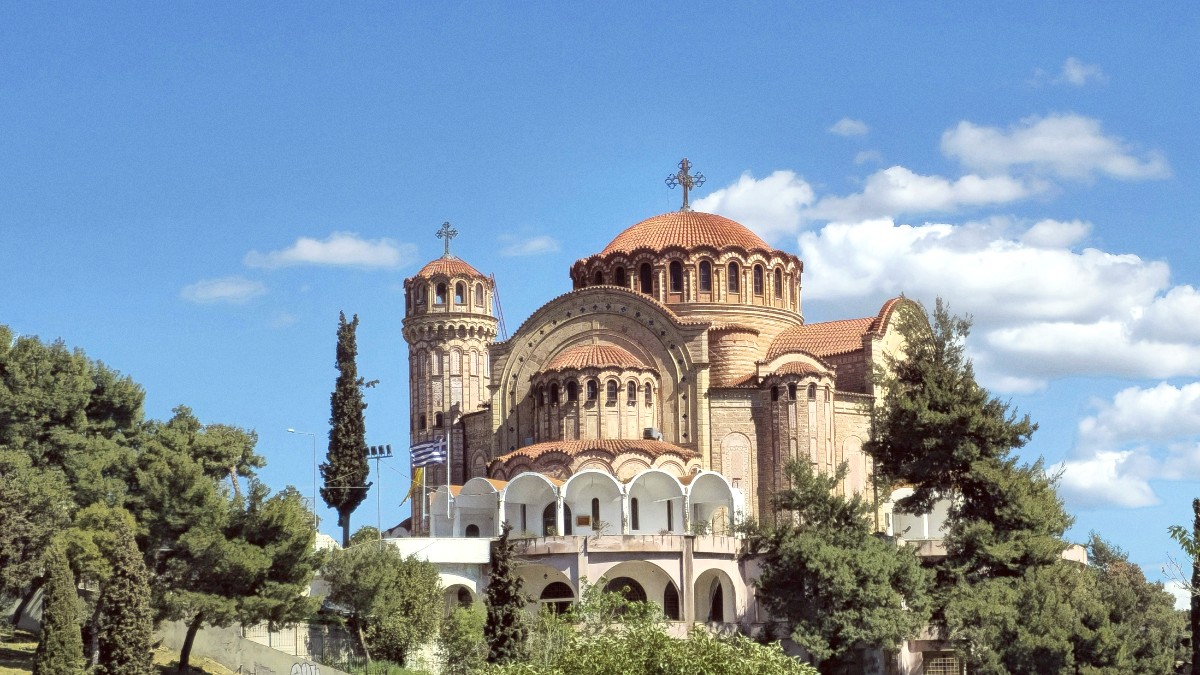
Northern Greece, Greece
Thessaloniki's position as a major port and cultural melting pot for centuries shaped its food. It saw the passage of Romans, Byzantines, Ottomans, and waves of Jewish, Armenian, and Balkan populations. Each group left a culinary mark.
Northern Greek cuisine tends to be richer, spicier, and uses more meat and butter compared to the olive-oil-centric dishes of the south. It often features slow-cooked stews and savory pastries.
While Thessaloniki is a melting pot, its regional cuisine shares characteristics with Macedonia and Thrace.
There is an emphasis on slow-cooked stews, grilled meats, and a wide variety of savory and sweet pastries. The city's unique contribution often lies in its interpretation of these broader regional dishes, influenced by its diverse urban population. Specific pastries like bougatsa and trigona hold iconic status here.
A thin, crispy filo pastry with various fillings. Sweet cream or savory minced meat/cheese are common.
Find at numerous bakeries and specialized bougatsa shops like "Bantis" or "Serraikon" (for savory) and "Bougatsa Thessaloniki" (for sweet).
Souvlaki: small pieces of grilled meat on a skewer. Gyros: slices of seasoned meat cooked on a vertical rotisserie. Served in pita bread with toppings.
"Souvlatzidika" (souvlaki joints) and "Gyradika" (gyros places) are common fast-food style eateries.
Oblong meatballs, typically minced beef or lamb, flavored with cumin and simmered in a rich tomato sauce.
Find at traditional tavernas and "mageirefta" (cooked food) restaurants. A classic comfort food.
Ouzo: An anise-flavored aperitif. Tsipouro: A strong, clear pomace brandy. Retsina: A resinated white wine with an unique flavor. All are often enjoyed with meze.
Greek Coffee (Ellinikos Kafes) is strong and unfiltered. Frappé, Freddo Espresso, and Freddo Cappuccino are popular cold coffees. Iconic desserts include Loukoumades (fried dough balls), Halva, and Baklava. Festive treats include Kourabiedes and Melomakarona for Christmas.
Several upscale restaurants provide modern Greek or international cuisine. They feature elegant decor, refined service, and extensive wine lists.
Tavernas are traditional Greek eateries. Ouzeris/Tsipouradika specialize in ouzo or tsipouro with meze. Psarotavernes specialize in fresh seafood.
Bougatsa Shops, Souvlatzidika, Gyradika, and bakeries. Modiano and Kapani Markets have small eateries and street food stalls.
Vegetarian options are easy to find. Many traditional Greek dishes are vegetarian. Vegan availability is growing, especially in larger cities like Thessaloniki. Look for "nistisimo" (fasting) dishes during Lent, as these are traditionally vegan.
Communicate clearly that you are "veganos" to avoid all animal products including cheese and yogurt.
Awareness for gluten-free is increasing. Many naturally gluten-free options exist (grilled meats/fish, salads, vegetables, rice dishes). Cross-contamination is a concern in traditional kitchens.
Learn to say "choris glouteni" (without gluten) and inform staff about severe allergies.
Local companies offer classes on traditional Greek or Northern Greek cuisine, often including a market visit.
Explore Thessaloniki's diverse food scene, visiting markets, specialized shops, and traditional tavernas with tastings.
Opportunities exist in the broader Northern Greece region for wine tourism, easily accessible for day trips.
Ordering small meze dishes with ouzo or tsipouro is a quintessential Thessaloniki experience, encouraging social gatherings.
Many "nistisima" (fasting) dishes become prominent. These are typically vegan, without meat, fish, eggs, or dairy. Lagana bread, halva, and various vegetable-based stews.
This period highlights plant-based options.
Easter: Roast lamb on a spit is the traditional centerpiece of Easter Sunday meals. Christmas: Kourabiedes (butter cookies with powdered sugar) and Melomakarona (honey cookies) are popular festive treats.
Festive times showcase specific culinary traditions.
Food tours are a popular way to explore Thessaloniki's diverse food scene. Tours typically visit local markets, specialized food shops, and traditional tavernas.
The city's unique contribution often lies in its interpretation of broader regional dishes, influenced by its diverse urban population.
Beyond dining, Thessaloniki offers ways to immerse yourself in its food culture.
Several local companies or individuals offer cooking classes focusing on traditional Greek or Northern Greek cuisine.
A popular way to explore Thessaloniki's diverse food scene. Tours typically visit local markets, specialized food shops, and traditional tavernas.
Opportunities exist in the broader Northern Greece region, specifically around areas known for wine production (e.g., Naoussa, Amyndeo) or olive oil.
Use apps like HappyCow for vegan/vegetarian restaurants, aiding your search for suitable dining.
These tools simplify finding options.
Research restaurants in advance and check their menus online. Communicate clearly with restaurant staff. Do not hesitate to ask questions about ingredients.
Clear communication aids a pleasant dining experience.
Try the local pastries for breakfast. Bougatsa and Koulouri are quick, tasty, and affordable. Bougatsa offers a sweet or savory start to your day. Koulouri serves as a quick and convenient snack.
Visit local bakeries early for the freshest selections. This daily ritual offers an authentic local flavor. Pair your pastry with a strong Greek coffee for a complete morning experience.
Modiano Market and Kapani Market present small eateries and street food stalls. They are ideal for quick, local bites and a true glimpse into daily life and local culinary traditions.
Tipping customs vary; refer to the budgeting section for specific guidance.